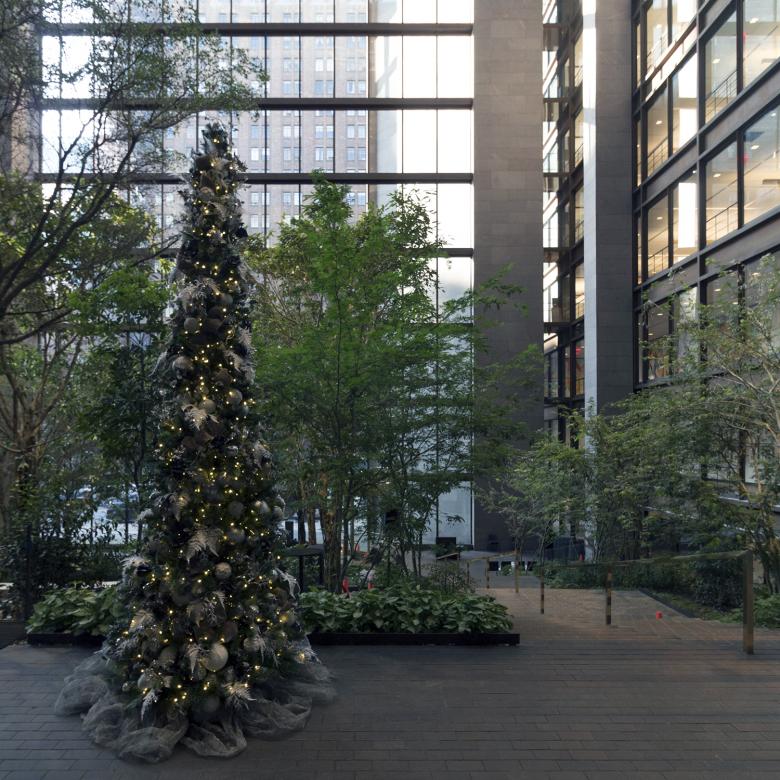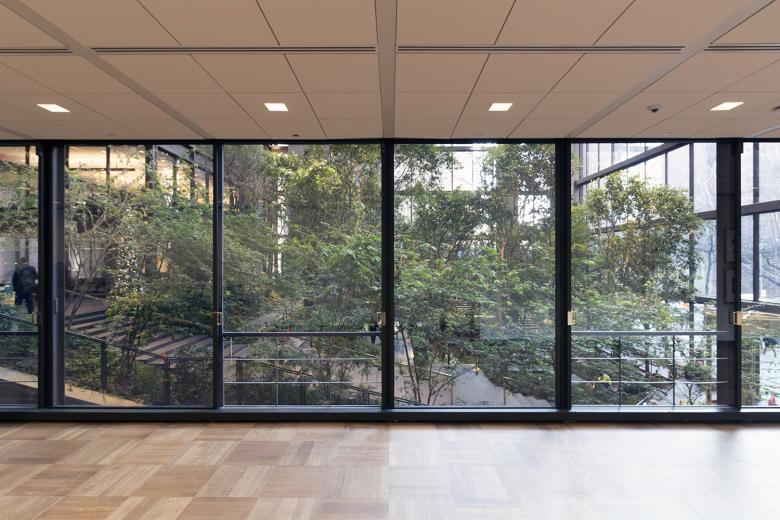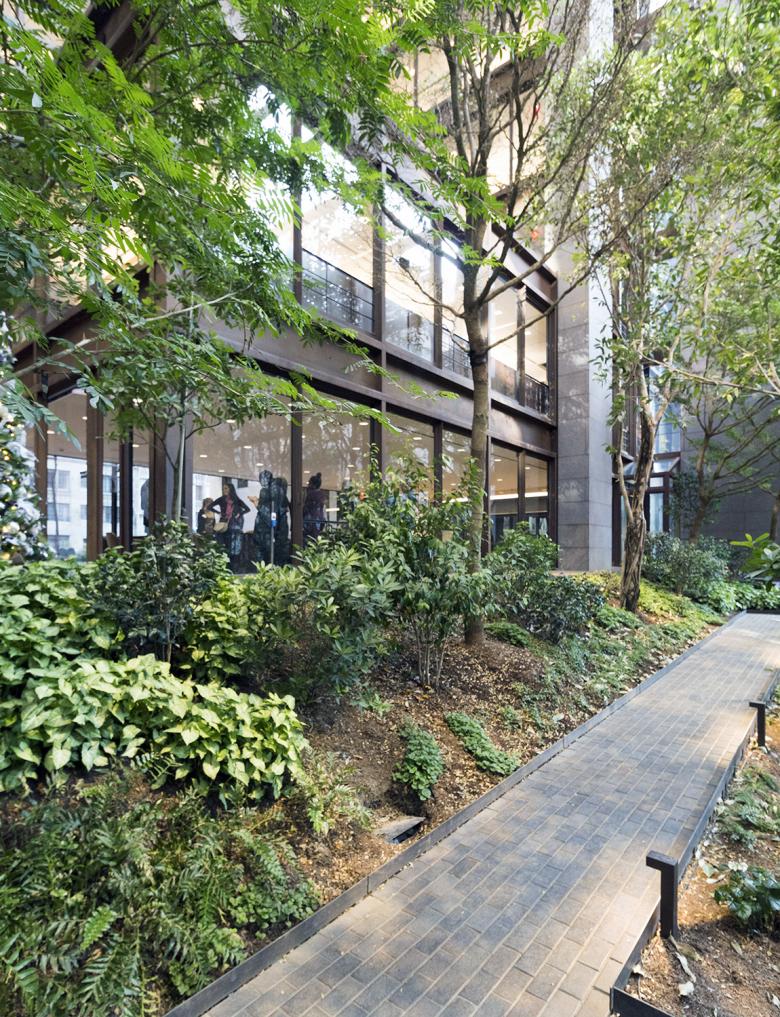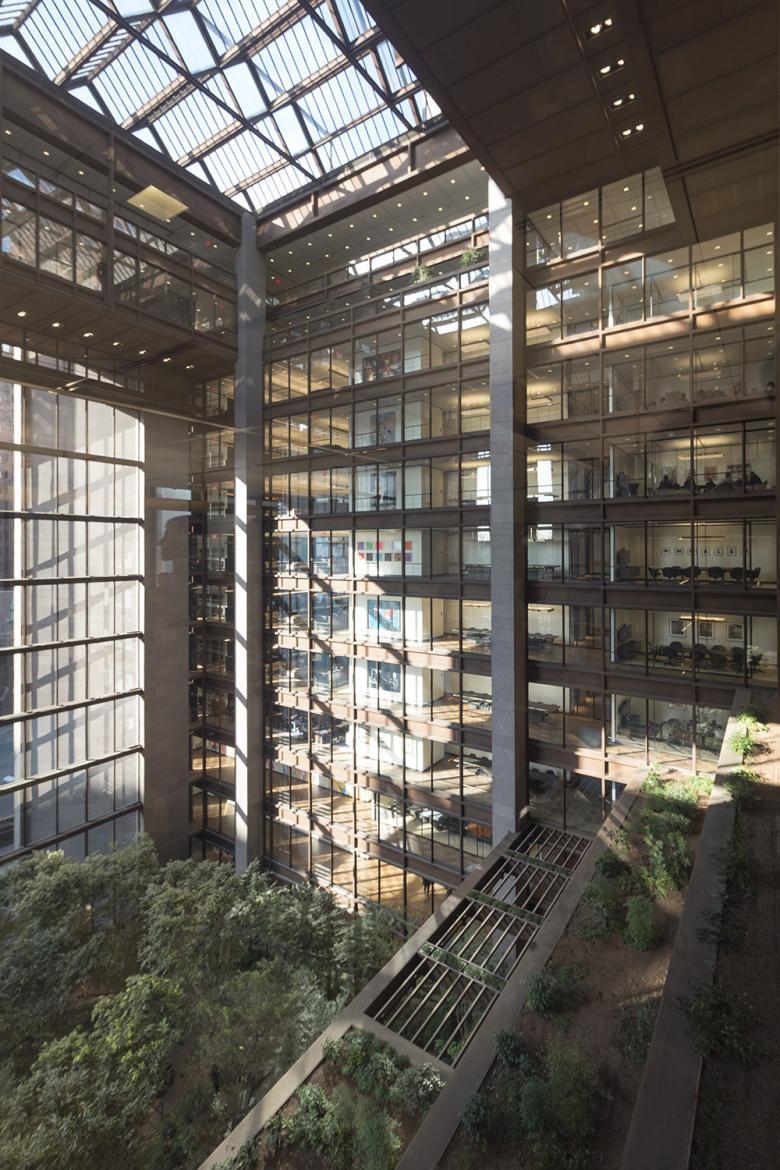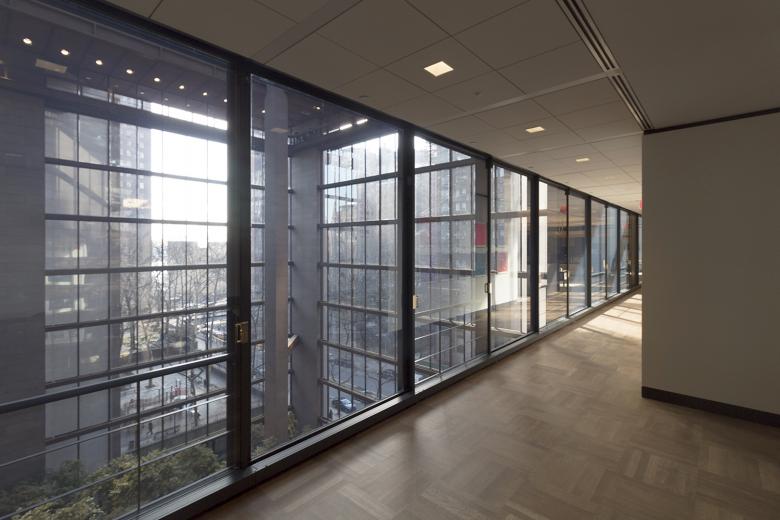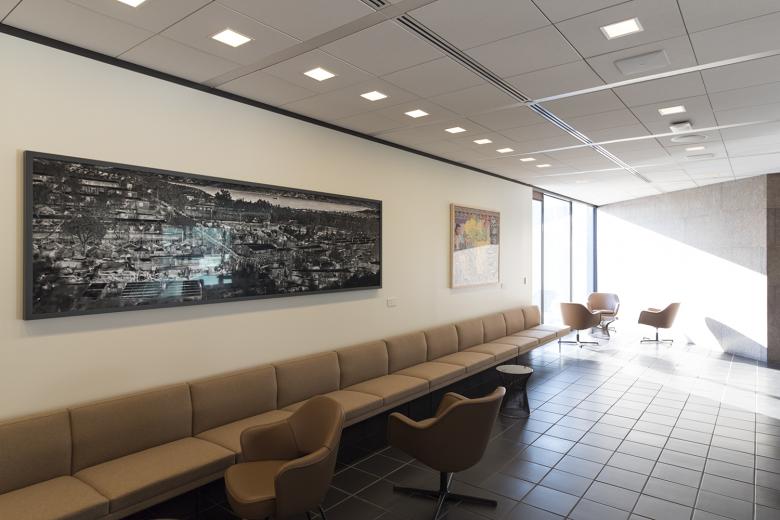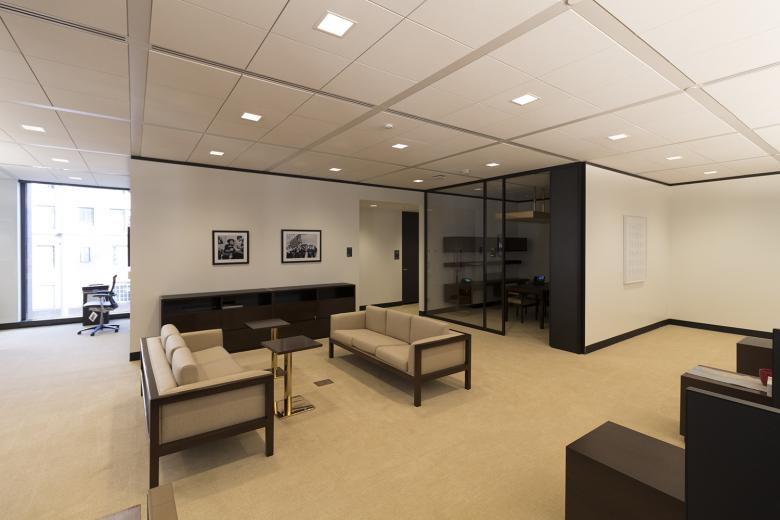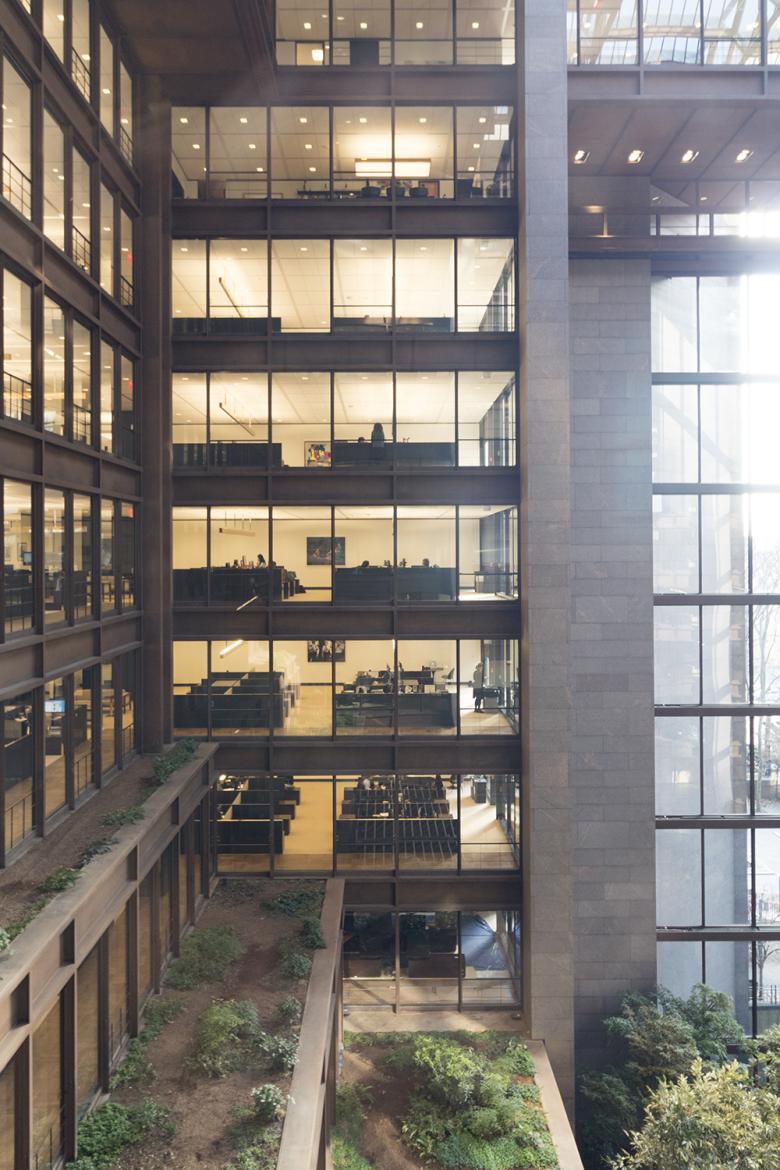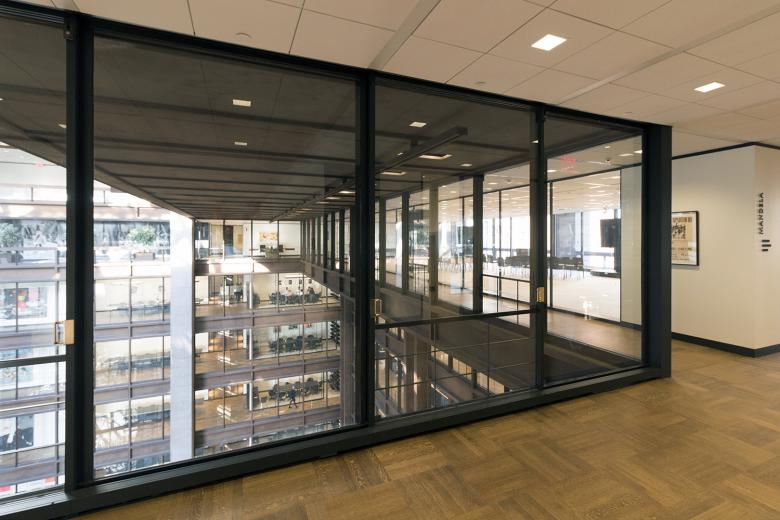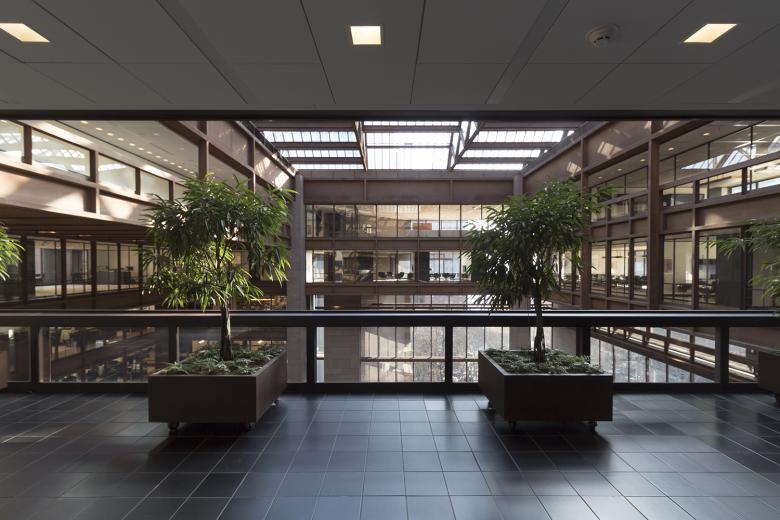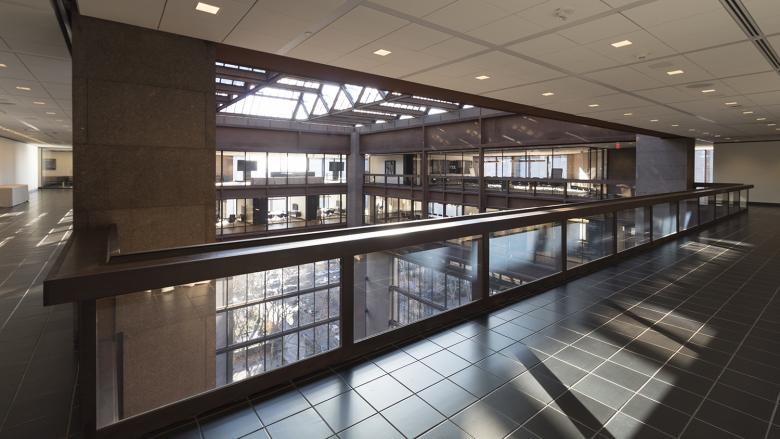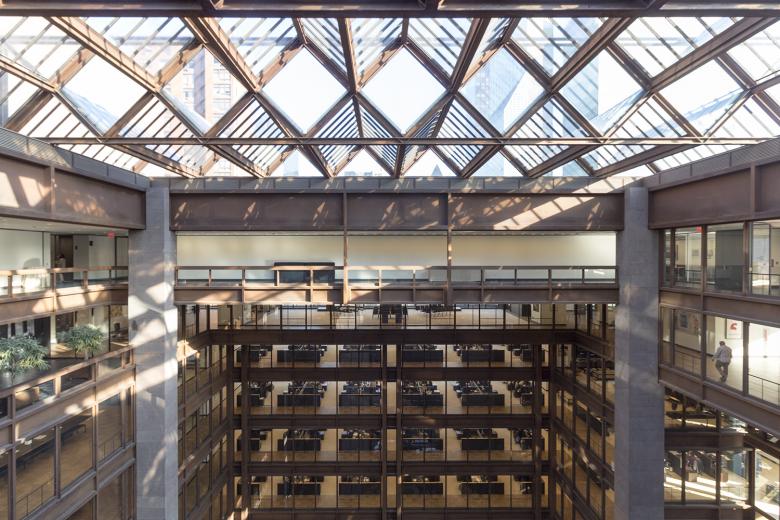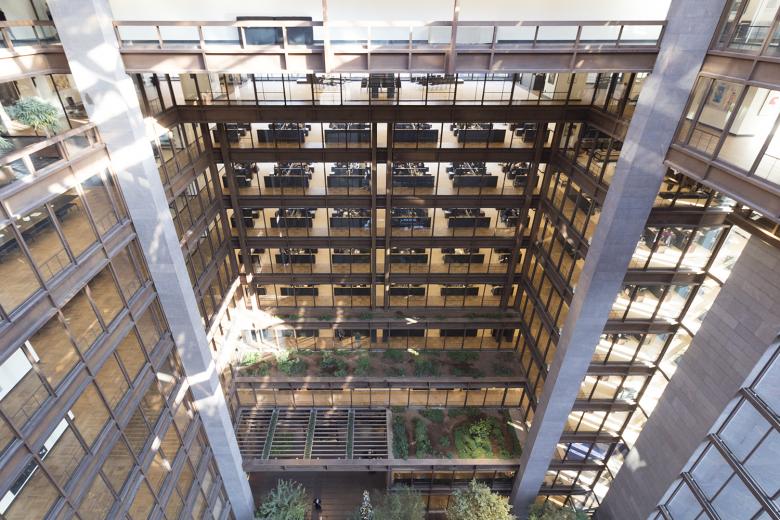Inside the Ford Foundation, 50 Years Later
John Hill
12. December 2018
All photographs by John Hill/World-Architects
The Ford Foundation building in Midtown Manhattan, designed by Kevin Roche John Dinkeloo and Associates, celebrated its 50th anniversary this year with a careful $205 million renovation by Gensler. World-Architects got a tour of the building that just reopened as the Ford Foundation Center for Social Justice.
The Ford Foundation opened its doors to some journalists yesterday for a press conference and tour of the twelve-story building that was completed in 1968. Arriving too late for the press conference due to subway issues, I checked in at security, took the elevator to the 10th floor, and then looked around for the tour group. Walking along the edge of the full-height atrium, another delayed journalist commented to me that we should be able to find them easily since the building is set up like a Panopticon, referring to the 18th-century prisons that had circular plans with cells on the perimeter and a central guard watchtower. He's right, given that the once-executive tenth and eleventh floors extend out over the atrium, looking back at the office floors: a corporate-philanthropic Panopticon that Kevin Roche nevertheless intended to foster a sense of community rather than control. Yet, as will be seen in the following photos from the tour (yes, we managed to find the group), the all-seeing effect is one aspect of the original that has changed in Gensler's subtle, sensitive renovation of the Ford Foundation.
